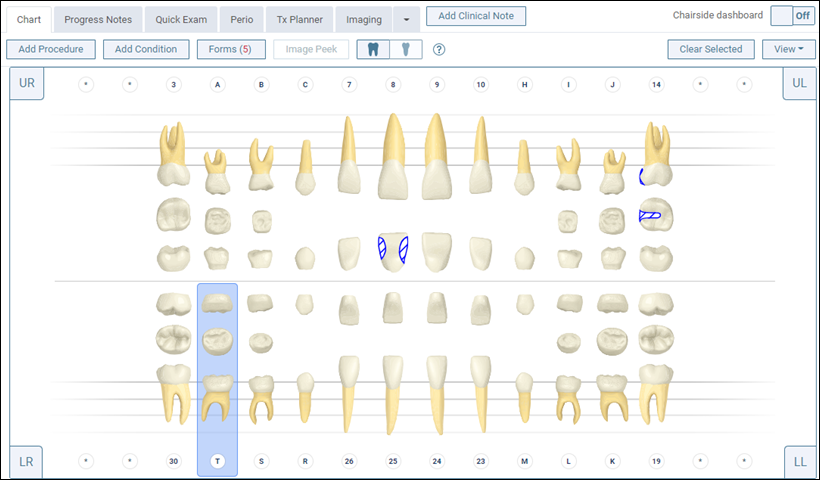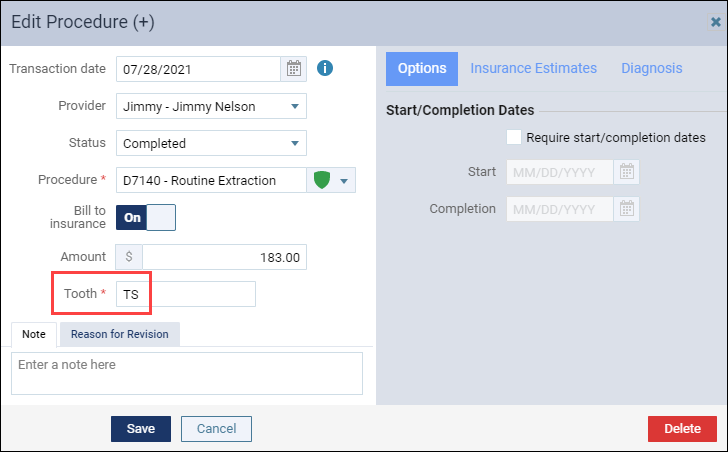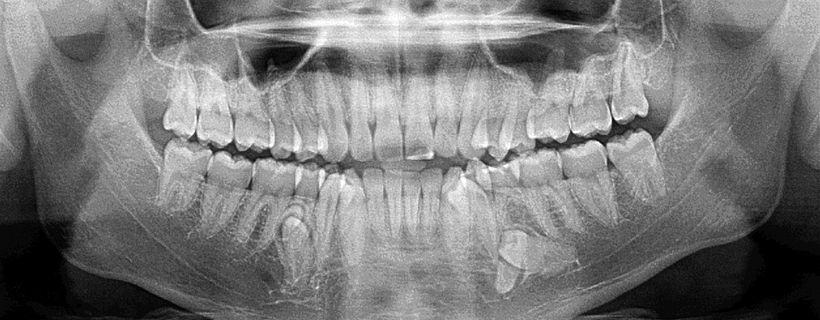Normally, adults have 32 permanent teeth, and children have 20 baby teeth. In some cases, however, a patient may have extra teeth in their mouth called supernumerary teeth. When you need to chart treatment for a patient with a supernumerary tooth, Dentrix Ascend makes the process easy if you use the following guidelines based on ADA recommendations:
- When charting permanent teeth, add 50 to the closest standard tooth number. For example, if a supernumerary tooth is adjacent to tooth 12, the tooth number entered would be 62.
- When charting primary teeth, add the letter “S” after the closest standard tooth number. For example, if a supernumerary tooth is adjacent to tooth T, the tooth number entered would be TS.
How to:
- In the patient’s chart, select the tooth closest to the supernumerary position, and add the procedure.


- Go to the patient’s Progress Notes, and select that procedure.

- In the Edit Procedure window, edit the Tooth number to be the supernumerary tooth number, and click Save.

The updated tooth number appears in the Progress Notes and in the insurance Claim Detail. Insurance companies recognize and accept this tooth numbering schema as approved by the ADA.


Additional Information
- Numbers 51 through 82 identify supernumerary teeth in permanent dentition. In other words:
- Supernumerary #51 is closest to the upper right molar, which is tooth #1 (1+50=51).
- Supernumerary #82 is closest to the lower right third molar, which is tooth #32 (32+50 =82).
- The chart does not display supernumerary teeth. Rely on the Progress Notes to track them. After you change the tooth number in the Progress Notes, any procedure (and its associated charting symbol) that you added to the closest tooth disappears from the chart.
- For more information about charting, see Charting treatment.

